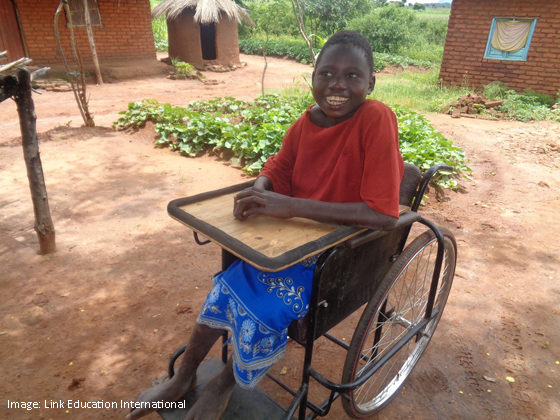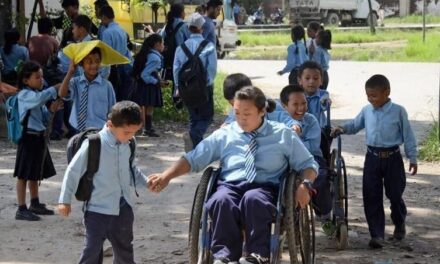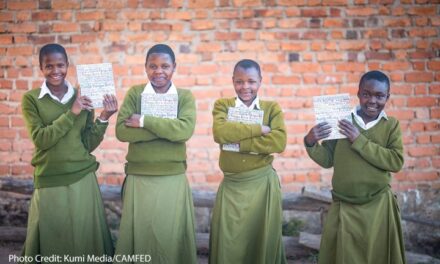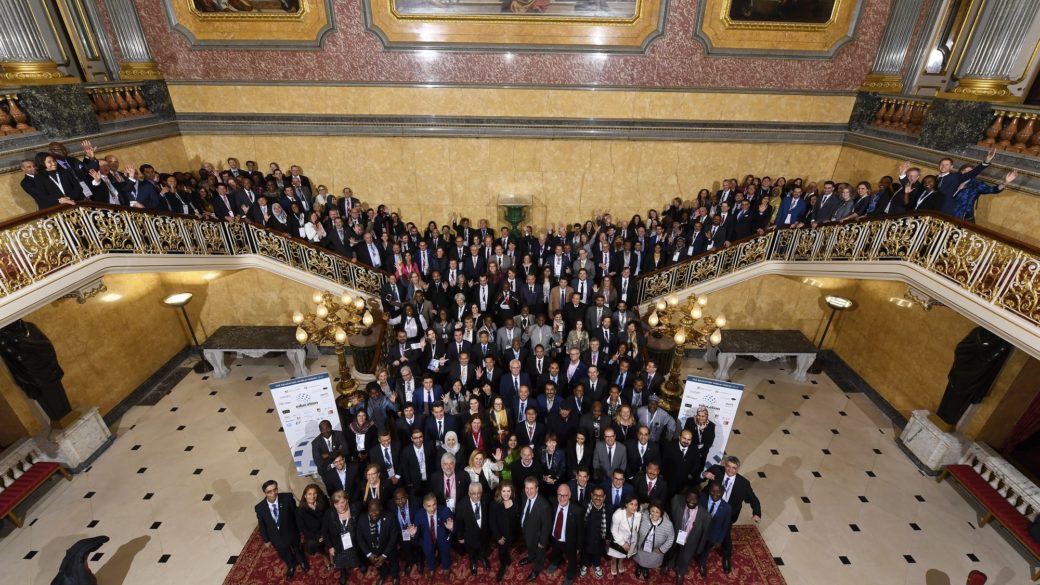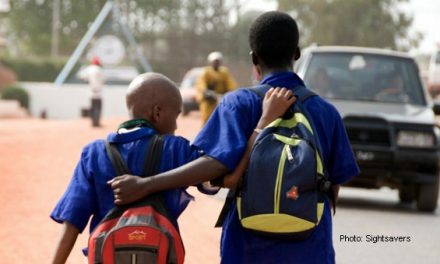This blog was written by Kate Sykes, International Programme Manager for Link Education International.
“An important element of inclusive education involves ensuring that all teachers are prepared to teach all students. Inclusion cannot be realised unless teachers are empowered agents of change, with values, knowledge and attitudes that permit every student to succeed.” Global Education Monitoring Report Policy Paper 43.
When Link Education International (Link) launched the TEAM Girl Malawi project, it was the first time we had actively sought to include children with disabilities in our work. Since then, we and our partners have been on a learning journey which has altered our perspective on inclusion and embedded a rights-based approach to programming.
As a UKAid-funded Leave No Girl Behind project, TEAM Girl Malawi’s goal is to support the girls who are the hardest to reach, the most educationally marginalised in their specific context. The project aims to significantly improve learning outcomes for the 6,000 most marginalised adolescent girls in three districts in Malawi, enabling them to transition to education, training or employment for improved learning and life chances. A needs assessment at the beginning of the project supported the Global Education Monitoring Report conclusion that “children with disabilities constitute 15% of the out-of-school population,” and children with “a sensory, physical or intellectual disability are 2.5 times more likely to never have been in school as their peers without disabilities.” In consultations with 40 communities in Malawi, disability was consistently ranked as the single greatest barrier to education. Of the learners enrolled in the TEAM Girl Malawi project, 13% have a disability.
Recognising that the most severe marginalisation occurs when multiple barriers intersect (e.g. gender, poverty, disability), TEAM Girl Malawi takes a holistic approach to supporting the most marginalised girls. Reflecting on Link’s history of improving education quality through strengthening education systems, we realised that to reach those who are the furthest behind we needed to adopt a twin-track approach, working to support the education system as a whole to become more inclusive, while making adaptations for specific barriers by considering individuals’ needs. The consortium we assembled for TEAM Girl Malawi brings expertise in education (Link Community Development Malawi), sexual and reproductive health (Theatre for a Change), income generation (Supreme) and data (CGA Technologies), and we work closely with Malawi’s Ministry of Education.
An early challenge for the consortium was to recognise that many of our staff lacked experience and confidence in working with people with disabilities. A first step was to provide inclusive education training for our teams. Accessed through the Enabling Education Network (EENET), this training enabled staff members to:
- reflect on their own attitudes and identify any assumptions they might be making about disability;
- consider how disability may be regarded by the communities where they work and how this may affect the identification and inclusion of participants in the project;
- identify a wide range of changes which could be made in classrooms, learning environments, and communities to make education more inclusive;
- build the confidence to make adaptations to include learners with disabilities.
As the lead consortium partner, Link recruited a Gender and Social Inclusion Specialist to integrate inclusion throughout the project, with a remit to focus on disability, gender, and the intersection of these characteristics. To ensure the perspectives of people with disabilities were included throughout the project design, the project partnered with the Federation of Disability Organisations in Malawi (FEDOMA) and the Malawi Council for the Handicapped (MACOHA), whose representatives attend project planning sessions to advise the team on approaches and adaptations.
Training on Inclusive Education was also delivered to the team of 500 facilitators who are responsible for providing learning through Complementary Basic Education (CBE) classes and Girls’ Clubs. The Inclusive Education approach to teaching recognises that barriers faced by girls with disabilities interact with those from the learner’s wider profile, such as family responsibilities, hunger, and vulnerability to abuse, to affect her presence, participation and achievement. Rather than taking a standardised approach to teaching learners with specific challenges, facilitators are asked to be problem solvers in the learning environment, making adaptations to pedagogy, timing of lessons, and modifications to learning spaces to take account of multiple barriers faced by their students.
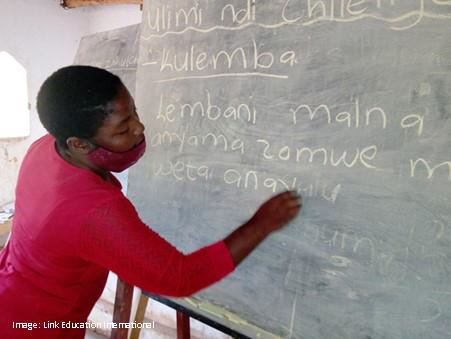 The key learning point for us was that adaptations which are made to include learners with disabilities are beneficial to ALL learners, no matter the barriers they are experiencing. An inclusive facilitator who recognises that a student is struggling to concentrate in class for a range of reasons, whether these are related to disability, home life, or something else, will reinforce key concepts using different techniques, use multiple learning aids, provide additional breaks, and support the learner to catch up with homework or remedial classes. As a result, instead of singling out learners with disabilities or other challenges for different treatment, everyone is supported to participate, and the variety of participation methods makes learning more fun and more effective for all. Where specific support is needed, such as advice from disability specialists, partners work alongside us to complement our inclusive activities.
The key learning point for us was that adaptations which are made to include learners with disabilities are beneficial to ALL learners, no matter the barriers they are experiencing. An inclusive facilitator who recognises that a student is struggling to concentrate in class for a range of reasons, whether these are related to disability, home life, or something else, will reinforce key concepts using different techniques, use multiple learning aids, provide additional breaks, and support the learner to catch up with homework or remedial classes. As a result, instead of singling out learners with disabilities or other challenges for different treatment, everyone is supported to participate, and the variety of participation methods makes learning more fun and more effective for all. Where specific support is needed, such as advice from disability specialists, partners work alongside us to complement our inclusive activities.
This inclusion ethos is embedded throughout the project, from the way we conduct community engagement and Monitoring and Evaluation, to the transition pathways for girls to return to school or enter vocational training. Having shifted our attitude towards inclusion, we realise that we don’t need to be disability “experts” to run more inclusive projects – we are able to prioritise those who have been left behind, while improving education for ALL learners.
We are already seeing the impact of our inclusive approach. Attendance rates for learners with disabilities are similar to those without, and over 95% of learners when asked about their learning experience said that they found the content useful and teaching good quality. It has been especially important to maintain this over the last year as we adapted to the disruption of the COVID-19 pandemic. 75% of learners reported that they felt they were progressing well, and this is supported by the data from termly tests. Learners with seeing difficulties are even out-performing their peers in maths (from project monitoring data and 2nd Tracer Study). By disaggregating our data by disability and other marginalisation factors, we can continue to adapt our services to meet all learners’ needs.

